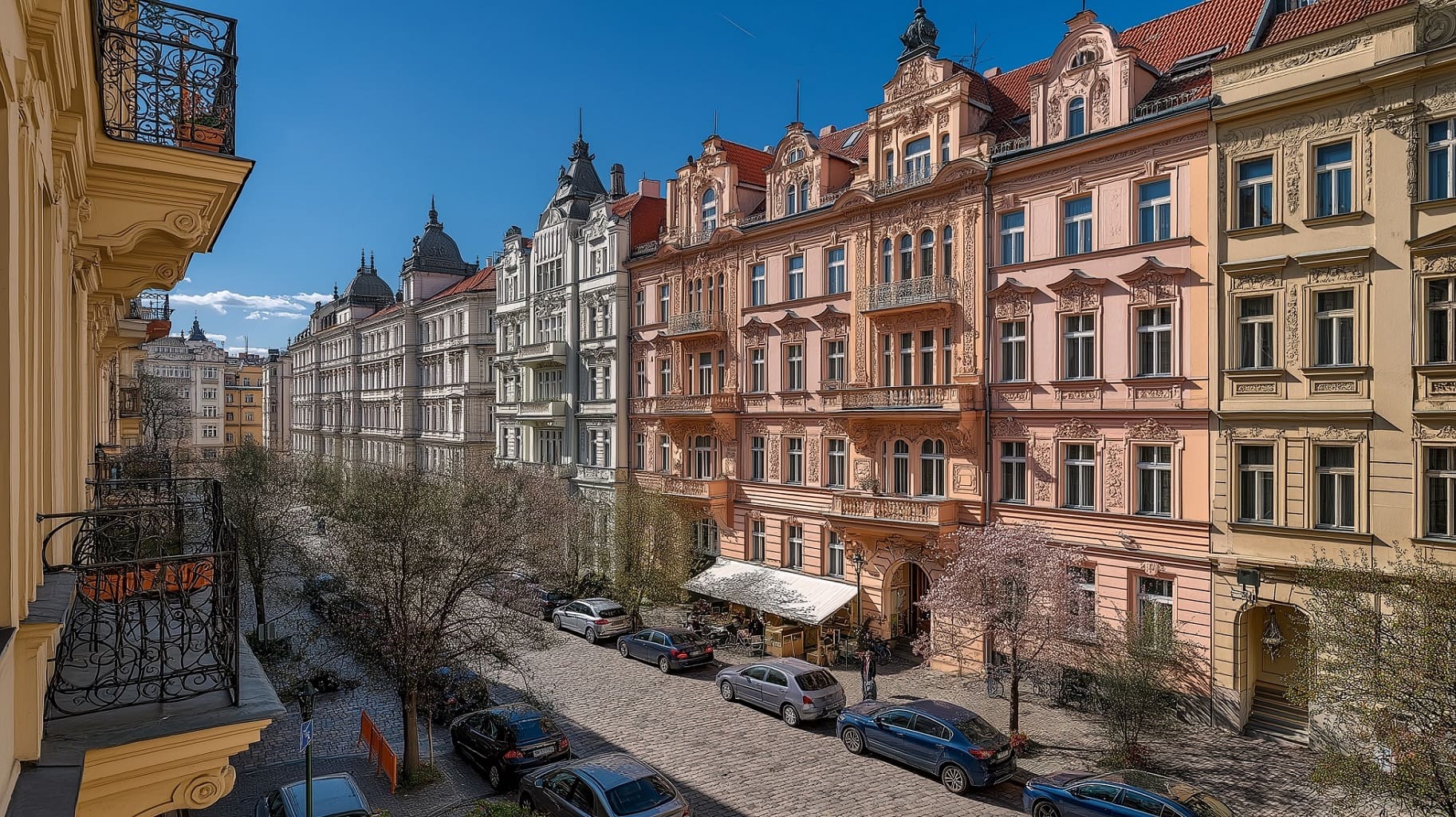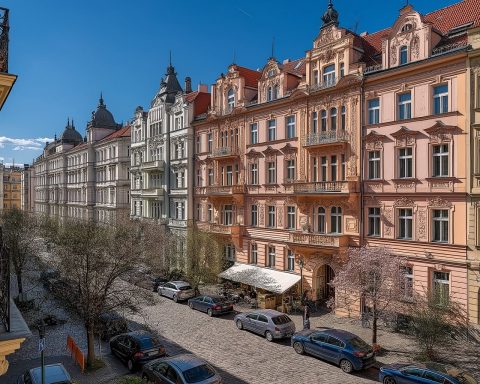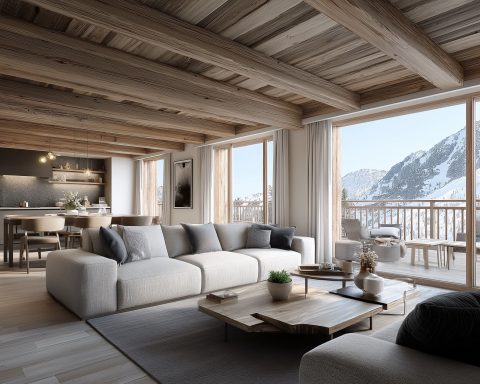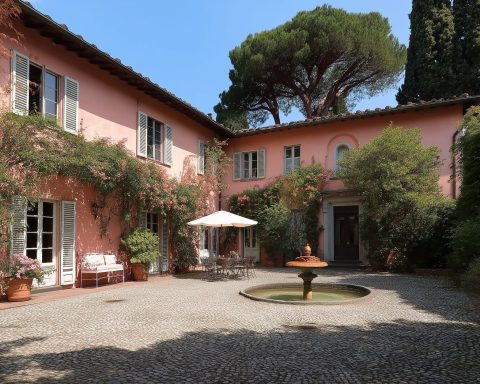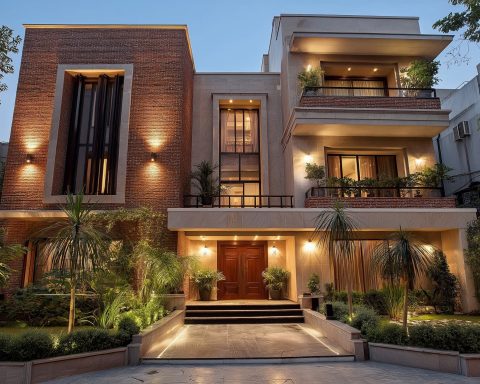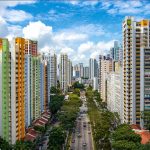Introduction and Market Overview (2025)
Prague’s real estate market in 2025 is experiencing a broad resurgence across most segments, after a brief cooldown in 2022–2023. Property prices are climbing again – especially in the residential sector – fueled by renewed demand, easing mortgage rates, and the city’s chronic housing shortage praguedaily.news investropa.com. At the same time, commercial real estate sectors (office, retail, and hospitality) are rebounding as the economy stabilizes and tourism returns, while the investment market shows signs of recovery with increasing transaction volumes cbre.com knightfrankprostory.cz. The following report provides a detailed look at all major segments – residential (including luxury and rental markets), commercial, and investment properties – along with key trends, regional dynamics, development projects, and projections for the coming years.
- Economic context: The Czech economy is forecast to grow modestly in 2025, with inflation easing and interest rates gradually coming down cbre.com. The Czech National Bank’s base rate, which peaked at 7% in 2022, has been cut to about 3.5% by mid-2025, translating into much lower mortgage rates (now ~3.6–4.7%) and improving financing conditions for buyers investropa.com investropa.com. Unemployment remains among the lowest in Europe (around 3%), supporting household incomes, while Prague’s population continues to rise (up ~1.4% year-on-year to ~1.38 million in early 2024) a.storyblok.com – demographic trends that underpin robust real estate demand.
- Investment market: After a subdued period, investor activity is picking up. Q1 2025 saw the highest quarterly real estate investment volume since early 2020, indicating returning confidence knightfrankprostory.cz. Total investment volumes are projected to exceed €2 billion in 2025, driven initially by domestic capital (Czech funds) but with foreign investors increasingly eyeing opportunities as prices stabilize knightfrankprostory.cz cbre.com. Prime property yields have leveled off after rising in 2022–2023, and are expected to remain broadly stable in 2025 (around 4.0% in Prague’s residential sector, slightly higher in commercial) conbiz.eu cushmanwakefield.com. Overall, Prague’s real estate market shows resilience and opportunity heading into 2025, even as each segment exhibits its own dynamics.
Residential Real Estate in Prague
Price Trends and Demand in 2025
After years of rapid appreciation, Prague’s housing prices briefly stagnated or dipped in 2022–2023, but they have rebounded strongly through 2024 and into 2025. Average apartment values in Prague hit record highs in early 2025, surpassing their pre-correction peak. In fact, newly built flats are selling at roughly CZK 160,000 per square meter on average (≈€6,600), about 10–12.5% higher than a year prior praguedaily.news. According to an analysis by major developers, 2,550 new flats were sold in Prague in Q1 2025 – nearly 60% more than Q1 2024 – marking the busiest start to a year in 15 years praguedaily.news. This surge in demand is attributed to falling mortgage rates and renewed buyer confidence: average interest rates on new housing loans dropped from ~5.2% in 2024 to under 4.7% by early 2025, prompting many previously sidelined buyers to return to the market praguedaily.news. Would-be homeowners are also rushing in anticipation of further price increases amid limited supply praguedaily.news.
Table: Recent Annual Housing Price Changes (Czech Republic) conbiz.eu
| Year | Nominal Change in House Prices |
|---|---|
| 2021 | +25.8% (boom year) |
| 2022 | +6.9% (slower growth) |
| 2023 | –1.0% (small decline) |
| 2024 | ~+7% (Prague; renewed rise) |
Source: Czech Statistical Office, Czech National Bank – Housing Price Index csu.gov.cz conbiz.eu
By mid-2025, Prague property values have not only recovered but exceeded pre-correction levels. New apartments average CZK 167,947/m² (as of June 2025) investropa.com, and even the median price of all flats (including older resales) climbed ~16% year-on-year to around CZK 131,000/m² investropa.com investropa.com. This sharp upswing follows a period in 2022–early 2023 when high mortgage costs dampened prices; now, with four consecutive quarters of growth, the housing market has regained momentum investropa.com investropa.com. Industry forecasts suggest continued price increases through 2025, though at a more moderate pace. The Czech National Bank (CNB) cautions that annual housing price growth of 5–10% is likely under current conditions conbiz.eu conbiz.eu. Some analysts are even more bullish – for example, advisors at Swiss Life posit that if mortgage rates fall to ~4.6% by late 2025, Prague apartment prices (which jumped ~10–15% in 2024) could rise at a similar double-digit rate in 2025 conbiz.eu. In general, the consensus is that prices will keep rising in the near term (fueled by the supply-demand imbalance), but perhaps not at the extreme pace seen during the 2021 boom.
Supply Constraints and Development Pipeline
Despite vigorous demand, housing supply in Prague remains chronically tight. New construction is falling far short of what is needed, exacerbating competition for homes. As of early 2025, the inventory of unsold new flats on the market was only around 5,300–5,700 units – a number that has barely changed in two years, even with developers gradually releasing projects that were postponed during the recent slowdown praguedaily.news conbiz.eu. This static inventory reflects the slow churn: any new completions are quickly absorbed by buyers, and few projects remain available. According to the Czech Statistical Office, only ~8,191 flats were approved in Prague in all of 2024, whereas urban planners estimate the city needs 10,000+ new units annually to satisfy demand praguedaily.news praguedaily.news. In fact, Prague has never exceeded 10,000 permitted flats per year in the past 20 years, leading to a cumulative housing deficit that keeps growing praguedaily.news. The permitting and construction process is often lengthy and bureaucratic, causing delays: even though developers ramped up project launches in 2024 to capitalize on the market recovery, many developments are still in early phases and will not hit the market for years conbiz.eu conbiz.eu.
Several factors contribute to the supply crunch: high construction costs (materials and labor rose sharply in recent years), labor shortages in the building industry, and complex zoning and approval procedures. While construction input inflation has stabilized somewhat since the peaks of 2021–2022, building in Prague remains expensive and slow a.storyblok.com a.storyblok.com. Moreover, a portion of newly permitted units are now being pre-sold to institutional investors (for rental purposes) and thus never enter the public for-sale market conbiz.eu – effectively reducing supply for individual buyers. The result is a persistent structural shortage of homes for sale, which in turn keeps upward pressure on prices.
On a positive note, several major development projects are underway that will eventually add housing and could ease the strain in the long run. These include large-scale brownfield redevelopments and city-led initiatives:
- Smíchov City (Prague 5) – A massive mixed-use project on a former rail yard, spanning ~200,000 m². Construction has begun, and hundreds of new apartments were delivered in 2023–2025, with thousands more to come in phases conbiz.eu conbiz.eu.
- Žižkov Freight Station (Prague 3) – Being transformed into a new quarter (sometimes called Žižkov City). Plans allow for around 3,000 flats on this 300,000 m² site, with a total investment of ~CZK 25 billion conbiz.eu conbiz.eu. Initial construction has started, but full build-out will occur over a decade.
- Rohan City (Prague 8) – A 22-hectare riverfront development in Karlín/Invalidovna, where the first phases of apartments and offices are under construction conbiz.eu. This project will supply thousands of housing units and extensive public spaces along the Vltava River as it progresses.
- Municipal Housing Initiatives: The City of Prague, recognizing the affordability crisis, launched a municipal development company (PDS – Pražská developerská společnost) to build housing on city-owned land. PDS controls over 800,000 m² of land and is planning 50+ projects (6,000–8,000 apartments total) over the next decade conbiz.eu conbiz.eu. Notable plans include new residential districts in outlying areas like Dolní Počernice and Nové Dvory, as well as converting existing buildings (e.g. an old post office) into affordable apartments conbiz.eu. While the municipal output will be relatively small (a few hundred units per year starting ~2025), the goal is to provide subsidized rental housing for key workers and modestly “cool” the market in the long term by increasing non-profit housing stock conbiz.eu.
In addition to these, the government is discussing broader reforms to boost housing supply. Proposed measures include streamlining permitting through digitization, appointing a national housing coordinator, and even offering state mortgage guarantees or developer incentives to spur construction conbiz.eu. However, unless such reforms take effect, analysts warn that Prague’s supply gap will persist – meaning demand will continue outpacing new supply, and price growth is likely to continue in the coming years conbiz.eu conbiz.eu.
District Highlights: Central vs. Suburban Areas
Prague’s real estate boom has been widespread, but market performance varies by district, with distinct trends in the historic center versus suburban neighborhoods. Generally, central districts command the highest prices – yet some of the fastest percentage growth has recently occurred in emerging areas just outside the core, as buyers seek (relative) affordability and new developments there.
- Price Levels: In prestigious central locales – for example, Prague 1 (Old Town/Malá Strana), Prague 2 (Vinohrady), and parts of Prague 7 (Letná) – new apartments now routinely top CZK 200,000 per m² (over €8,000/m²) praguedaily.news. These areas are limited in new supply (many sales are in refurbished historic buildings or boutique projects) and attract affluent buyers, including foreign investors, thus sustaining very high price points. By contrast, in fast-developing outer districts like Prague 9 (Vysočany, etc.), average new flat prices are around CZK 147,000/m² – considerably lower, though still rising praguedaily.news. Other mid-range districts such as Prague 4, 5, 10 (which include large residential zones and panelák housing estates from the 20th century) typically see new-build prices in the 120k–160k CZK/m² range, depending on the project. Even the “cheaper” areas of Prague are now well above CZK 100k per m², reflecting how nearly all parts of the city have become expensive by national standards.
- Recent Growth Hotspots: Over the last year, several districts on Prague’s periphery have seen double-digit price growth, outpacing the citywide average. Notably, Prague 7 (which includes trendy Holešovice and Letná) has led the market with roughly +25% year-on-year price appreciation, pushing average prices there above CZK 200k/m² investropa.com investropa.com. Prague 10 (Vršovice, Strašnice areas) has also climbed ~18%, and Prague 3 (Žižkov and part of Vinohrady) saw ~16% growth investropa.com. These districts combine relative affordability (compared to the core) with improving amenities and new projects, making them attractive to young professionals and families. Even Prague 2 – an inner district – rose ~17% year-on-year as buyers returned to well-established central neighborhoods investropa.com. In short, price growth has been broad-based across Prague, with virtually all districts experiencing significant increases as the market rebounded.
- Sales Activity: Outer districts tend to dominate in terms of the number of transactions, due to more new construction there. In Q1 2025, for example, the highest volume of new flat sales occurred in Prague 4, 5, 9, and 10 – areas with large development projects and housing estates praguedaily.news. Smaller apartments (studio or one-bedroom units) are especially popular among buyers, comprising about 75% of new flat sales as people gravitate toward whatever is most attainable in an expensive market praguedaily.news. Meanwhile, the most exclusive central districts (Prague 1, 2) have fewer transactions but at very high price tags per unit.
- Infrastructure impacts: Transportation upgrades are influencing some district dynamics. The new Metro Line D (now under construction) will run from the city center toward the southern suburbs (Pankrác–Krč–Libuš–Písnice). Though completion of the full line is delayed to the 2030s, anticipation of future stations has already boosted property values along the planned route – for instance, areas near the future Písnice and Nádraží Krč stations have seen noticeable price upticks as buyers bet on connectivity improvements expats.cz expats.cz. Likewise, ongoing road projects (such as extensions of the Prague Ring expressway) and new tram lines are gradually improving accessibility in certain suburban areas, which can enhance real estate appeal over time.
Luxury and High-End Properties
The luxury residential segment in Prague – which includes premium historical apartments, penthouses in modern developments, and luxury villas – is experiencing a renewed uptick in 2024–2025. During the period of market uncertainty and high interest rates, many high-end projects were put on hold or struggled to find buyers. Now, with market confidence returning, new luxury properties and top-tier refurbishments are coming back to market in Prague’s most expensive locations knightfrankprostory.cz. Knight Frank reports that after a long pause, prime developments (or complete renovations) are reappearing in areas like Prague 1 and 2, and their superior quality is driving prices even higher in those locales knightfrankprostory.cz. Examples include luxury residences around Old Town Square, Pařížská Street (the luxury shopping avenue), and newly built upscale complexes in Hradčany or Troja – all targeting wealthy domestic and foreign buyers.
Prague’s luxury home prices, while steep for the local context, remain lower than in Western European capitals, which suggests potential for further growth. International comparisons highlight that Prague is still more affordable than cities like Munich, Vienna, or Zurich in terms of prime real estate a.storyblok.com. For instance, a high-end Prague apartment at €8,000/m² appears “cheap” next to similar properties at €12,000–15,000/m² in Vienna or Munich. This gap, combined with Prague’s improving purchasing power (the city’s per-capita purchasing power is ~137% of the Czech national average) a.storyblok.com, has been drawing foreign interest to Prague’s luxury market. In recent years, affluent buyers from countries such as Russia, Ukraine, China, and Western Europe have acquired Prague luxury homes – whether as an investment, a second home, or for residence. (It’s worth noting that some demand from Russian nationals has tapered off due to EU sanctions since 2022, but other international buyers have filled the space.) Foreigners face virtually no legal barriers to buying real estate in Czechia – both EU and non-EU citizens are permitted to acquire property with no special restrictions or residency requirements ceelegalmatters.com – which has made Prague an accessible market for global investors. Overall, the outlook for luxury real estate is upbeat: developers are confident enough to launch high-end projects again, and the revival of tourism and the local economy is feeding into the top segment (for example, wealthy individuals from abroad returning to Prague). As a result, expect the prime segment to expand in the coming years, potentially narrowing the price gap between Prague and more established luxury hubs.
Prague’s Rental Market and Investment Properties
Soaring Rents and Tight Rental Supply
Prague’s residential rental market has undergone dramatic swings in recent years, and by 2025 it is decidedly landlord-favorable due to surging demand. Several factors have combined to push rental demand to new highs: rapidly rising property prices (pricing out many would-be buyers), a post-COVID return of students and expatriates, and a significant influx of foreign nationals (including ~350,000 Ukrainian refugees into Czechia since 2022, many of whom settled in Prague) conbiz.eu. The result has been strong upward pressure on rents. After a brief dip in 2020 (when thousands of Airbnb units flooded the long-term rental market during the tourism collapse, causing rents to drop ~25%), the rebound was swift conbiz.eu. By 2022–2023, as tourists returned and short-term lets reclaimed those units, Prague was hit with a new shortage of rental housing, driving rents up about 7–8% in 2023 alone conbiz.eu.
As of late 2024 and early 2025, Prague rents continue to climb, though the pace has begun to moderate slightly. By the start of 2025, average asking rent in Prague reached roughly CZK 438 per m² per month (about CZK 21,900 for a 50 m² flat, or €900/month) conbiz.eu. This is up from around CZK 395/m² at the end of 2023, reflecting a further increase but less extreme than the jump seen in 2022–23 conbiz.eu. For context, renting a typical 50 m² apartment in Prague (~CZK 20k/month) now costs nearly double what an equivalent unit would cost in a smaller regional city – for example, the same budget could rent ~80 m² in a city like Hradec Králové conbiz.eu. Prague is by far the most expensive Czech city for renters, with second-place Brno roughly 15–20% cheaper on average, and other cities (Plzeň, Olomouc, etc.) cheaper still conbiz.eu.
Within Prague, central and trendy districts command the highest rents, though interestingly the gap between districts is a bit narrower for rents than it is for purchase prices. According to Deloitte’s rent index for Q1 2025, the priciest rental districts were Prague 2 and Prague 3 – encompassing upscale Vinohrady and hip Žižkov – with average rents around CZK 478/m²/month (around €19.5/m²) conbiz.eu. Other central areas like Prague 1 and 7 are in a similar high range. Outer districts are slightly more affordable: for example, Prague 9 averages ~CZK 423/m² (≈€17/m²), although notably Prague 9 saw the fastest rent increase (+6.5% in a single quarter) as demand spills outward conbiz.eu. Even the cheapest corners of the city, like parts of Prague 11 or 12, see rents well above CZK 300/m² – underscoring how strong demand is city-wide.
This robust rental market has been a double-edged sword: it offers solid returns for landlords, but it’s squeezing local households. By some measures, rent affordability in Prague is challenging – a typical rent for a modest flat can consume a large portion of a median income. However, as more people find buying unattainable, renting is the only option, pushing the tenant population upward. Industry analysts project that the share of Czech households living in rentals will rise to ~25% by 2030, up from historically lower levels (Czechs traditionally had one of the highest homeownership rates in Europe) conbiz.eu conbiz.eu. Prague, being more urban and international, already has a higher rental ratio than the national average, and this trend is expected to grow.
Rental Yields and Investment Properties
From an investor perspective, Prague’s buy-to-let proposition has improved somewhat in the past two years. Rental yields (annual rent income divided by property price) in Prague were notoriously low (often just 2–3%) during the 2015–2021 boom, as property values shot up faster than rents. But the situation changed around 2022–2024: with property price growth pausing and rents jumping, gross yields have edged up to around 4.0% in Prague conbiz.eu. A 2024 analysis estimated the average apartment yield in Prague at ~4%, up from roughly 3% in the peak boom years conbiz.eu. This is still a relatively low yield (reflecting Prague’s status as a stable, low-risk market), but it is now on par with many Western cities and higher than Prague’s own recent past. Yields in regional cities tend to be higher – for example, Ostrava rental yields average ~5.1%, given much lower purchase prices – whereas Brno’s yields are closer to Prague’s (~3% or slightly below) due to its high prices conbiz.eu.
Even at ~4%, Prague’s gross yields are not exceptionally high, but many investors tolerate them because they expect strong capital appreciation. The combination of modest yields and high likelihood of price appreciation makes Prague property a popular long-term investment. It’s important to note that the ~4% yields are gross; after expenses (maintenance, property tax, periods of vacancy, etc.), net yields might be ~3% conbiz.eu. Still, given low interest rates on deposits, investors view real estate as an attractive asset class. Notably, as mortgage conditions improve (lower rates and loosening of previous lending restrictions by the CNB), more leveraged investors are re-entering the market – essentially, some buyers are taking advantage of cheaper mortgages to finance rental property purchases, counting on rents to cover the payments conbiz.eu. This trend picked up in late 2024 and 2025 and is expected to support continued growth in the private rental supply.
Institutional Rentals and Regulation
One of the most significant shifts in Prague’s rental landscape is the rise of institutional landlords and the Build-to-Rent sector. While historically the rental market was dominated by individual private landlords, recent years have seen large investors (funds, insurance companies, real estate firms) buying entire new developments to rent out conbiz.eu conbiz.eu. For example, there have been cases of foreign and domestic funds purchasing hundreds of units in bulk from developers, immediately turning them into long-term rentals. This nascent institutional rental housing market is expanding – and 2024–2025 marked a turning point, with multiple big Build-to-Rent deals and projects announced conbiz.eu conbiz.eu. The trend is supported by government initiatives too: the Czech state has discussed offering guarantees for rental housing financing and sees institutional rentals as one way to improve housing availability.
The benefit of this shift could be a larger supply of professionally managed rental housing (often with better services and maintenance for tenants). However, there is also a downside: when investors buy up new developments, those units are no longer available for purchase by individual owner-occupiers, which can further tighten the for-sale market and push sale prices higher conbiz.eu. Thus, while Build-to-Rent helps the rental supply, it can indirectly worsen the ownership affordability issue – a paradox noted by market observers.
In terms of regulations, Czechia’s rental market is relatively liberal. There are no nationwide rent controls or caps on rent increases for private housing; rents are set by market agreement between landlord and tenant. (The only exceptions are a small number of older contracts still under earlier regulation, and the city’s subsidized “social housing” units which are a tiny fraction of stock.) Tenants are protected by standard EU-aligned tenancy laws – for instance, eviction requires legal cause, notice periods apply, etc. – but there is no general limit on rental prices. In Prague’s heated market, this means rents can rise quickly until tenants push back or demand softens. The city government has been exploring measures to tame rent escalation (e.g. discussing stricter rules on short-term rentals like Airbnb, which can remove units from the long-term market), but as of 2025 no major rent-control legislation is in place. Instead, the approach is to increase the supply: as mentioned, Prague is investing in municipal rental projects to offer affordable units to certain groups (with rent moderation for those apartments) conbiz.eu. Additionally, monitoring of Airbnb has increased – Prague is considering enforcing registration and perhaps limiting short-term rental days, aiming to return some apartments to long-term use – but this is still in progress. For now, landlords in Prague enjoy a free-market system, and with vacancy rates extremely low, they hold considerable pricing power.
Commercial Real Estate Segments
Office Market
Prague’s office market in 2025 is on a stable footing, showing resilience after the pandemic-era disruptions. With roughly 3.7 million m² of modern office space, Prague is the CEE region’s second-largest office hub (after Warsaw). The year 2023 had seen relatively slow leasing as companies reassessed space needs, but demand picked up in late 2024 and into 2025. In Q1 2025, Prague’s office vacancy rate dropped to about 7.0%, improving from around 7.5–8% a year earlier knightfrankprostory.cz. This indicates that empty offices are getting filled, thanks to a combination of limited new supply and steady leasing activity. Net take-up (excluding renewals) in Q1 2025 was 47,900 m² – about 5% higher than the same period in 2024 knightfrankprostory.cz, reflecting growing occupier confidence as more employees return to workplaces on at least a hybrid basis.
Prime office rents have climbed as well. Headline rents for top-quality Grade A offices in the city center now reach around €29–30 per m²/month, and rose ~7% year-on-year by Q1 2025 knightfrankprostory.cz. Landlords of the newest, highest-spec buildings have been able to ask higher rates due to scarce availability of premium space. Many tenants are seeking to upgrade to better offices to entice staff back (flight to quality), which has driven up rents in modern sustainable buildings. Meanwhile, older and less efficient buildings face more pressure – some have higher vacancy and may need to be repositioned or refurbished. Cushman & Wakefield notes that quality is crucial: well-located, green-certified offices are in demand and will command premium rents, whereas secondary offices struggle and may even be candidates for repurposing (e.g. converted to residential or mixed-use) if they cannot meet modern occupier needs cushmanwakefield.com cushmanwakefield.com.
On the supply side, new office completions in Prague have been modest recently. Developers paused or delayed some projects in 2020–2022, so the pipeline for 2023–2025 is limited. The 10-year average annual new supply is around 150,000 m², but 2023–2024 delivered well below that, and 2025 is also expected to see below-average new space knightfrank-prod-api.springsystems.cz. This supply slowdown has helped prevent vacancy from rising too high. A few significant projects are underway – for example, the Masaryčka development near Masaryk Station (a mixed-use project with substantial offices designed by Zaha Hadid Architects) is adding modern offices in the city center. Also, Port7 in Holešovice and Nová Waltrovka in Jinonice recently delivered new offices that were largely pre-leased. Given the limited upcoming supply and sustained tenant interest, Prague’s office market outlook is stable to positive: vacancies are expected to remain in the mid-single digits (%), and rent growth may continue, albeit at a normalizing pace. Companies are largely adapting to hybrid work by optimizing (not abandoning) office space – many require less space per employee but want higher-quality environments, which supports demand for new projects.
Key office submarkets are performing differently. The City Centre (Prague 1) and Inner City submarkets (such as Pankrác, Karlín, Smíchov) have the lowest vacancies and highest rents, whereas some Outer City areas (outskirts) have more vacancy. For instance, Prague 4 (Pankrác/Budějovická) and Prague 8 (Karlín) remain very popular corporate locations and have seen strong leasing and even rental increases. In contrast, areas with older stock like parts of Prague 5 (Nové Butovice) have a bit higher vacancy. Overall, Prague’s offices are weathering the post-pandemic era well – the city benefits from diverse demand (including IT companies, financial services, professional firms, and EU agencies) and limited overbuilding. The main challenge ahead will be what to do with aging office buildings that can’t compete with new standards; some may be renovated, while others might be redeveloped into residential or other uses (a trend to watch beyond 2025).
Retail and Hospitality
Prague’s retail property sector is on a path of gradual recovery and adaptation. The high-street retail market in central Prague (e.g. Na Příkopě, Pařížská, Wenceslas Square) was hit during COVID when tourist footfall vanished, but 2024 saw a resurgence of visitors and shoppers. By 2025, tourism has come roaring back, which is crucial for Prague’s retailers: the city welcomed over 8 million visitors in 2024, slightly exceeding pre-pandemic levels praguedaily.news, and this trend continues upward. Cushman & Wakefield report that luxury retail is benefiting from the revival of tourism, as affluent visitors (especially from the U.S., Gulf states, and now Asia returning) flock to Pařížská’s luxury boutiques cushmanwakefield.com cushmanwakefield.com. The luxury segment’s customer base is less sensitive to inflation, so high-end stores are seeing sales growth and in some cases expansion. Main streets and shopping centers in Prague are now experiencing strong leasing activity and low vacancy, leading to a modest rental growth outlook. Prime high-street rents in Prague are expected to rise moderately in 2025, reversing the rent declines of 2020–21 cushmanwakefield.com. Likewise, well-performing shopping malls have largely recovered their tenant mix and footfall; landlords of top centers (like OC Chodov, Westfield, Palladium) are once again considering slight rent increases as retailer sales improve cushmanwakefield.com.
However, not all retail is equal. The mid-market retail segment (mainstream brands targeting local consumers) is recovering more slowly, as Czech consumer confidence only bottomed out in late 2022 and has been improving gradually cushmanwakefield.com. High inflation in 2022 hurt consumers, but by 2025 inflation is lower and real wages are rising again, which should help retail spending. Discount retailers and grocery chains thrived during the lean times and continue to expand (for example, chains like Lidl or Pepco remain active tenants). In contrast, some international brands that left during COVID haven’t all returned, but notably in 2024 the Czech market saw 16 new brands enter (per C&W) as confidence builds cushmanwakefield.com. The outlook for Prague retail is cautiously optimistic: stable economic growth and booming tourism are positives, but e-commerce growth and high operating costs pose ongoing challenges. We expect incremental rent growth in prime locations, continued focus on food/beverage and entertainment offerings to draw in shoppers, and perhaps no new major shopping centers (developers are focusing on refurbishing or expanding existing centers rather than building new malls, given market saturation).
The hospitality and hotel property sector in Prague has rebounded in a big way. Prague is historically a top city-break destination, and by 2024–2025 it has essentially fully recovered to pre-Covid tourism volumes. Hotel performance data underscores this: as of Q3 2024, Prague’s hotels had the strongest revenue growth in Europe, with RevPAR (revenue per available room) up 11% year-to-date versus 2019 cushmanwakefield.com. Occupancy and room rates surged thanks to pent-up travel demand. Going into 2025, growth will continue, albeit at a more normal pace. Demand in 2025 is expected to surpass 2019 by over 16% in Prague’s hotel market, buoyed by the return of long-haul visitors from Asia and improved airline connectivity cushmanwakefield.com cushmanwakefield.com. Notably, Asian tour groups (absent for years) are coming back, and new direct flight routes (e.g. to the Middle East and Asia) are boosting international arrivals.
On the supply side, Prague’s hotel room stock is growing only marginally – hotel supply remains limited, with essentially no new large hotels delivered in recent years except a few redevelopments. The one segment seeing investment is the luxury hotel class: about 320 new luxury hotel rooms are slated to open by end of 2025 (including high-end projects like the renovated Fairmont Golden Prague and new hotels in historic buildings) cushmanwakefield.com cushmanwakefield.com. Even with these, Prague’s luxury hotel segment will remain undersupplied (only ~2.8% of total rooms), indicating room for further growth cushmanwakefield.com. Overall, the hospitality outlook is bright – higher tourist numbers support hotel revenues as well as related real estate like restaurants, cafes, and short-term rental apartments. Investors have noticed: after a pause, there’s renewed interest in hotel acquisitions and developments in Prague, especially from international operators looking to enter the market or upscale existing properties.
Industrial and Logistics Property
The industrial & logistics real estate sector in greater Prague has been a star performer in recent years, and it continues to be robust in 2025, albeit normalizing from the pandemic e-commerce boom. Prague’s strategic location in Central Europe and its consumer market make it a prime logistics hub. During 2020–2021, demand for warehouses soared (fueled by e-commerce and companies stocking inventory), leading to record-low vacancies and rapidly rising rents. By 2024, this sector cooled slightly as some cyclical demand eased, but fundamental drivers remain strong. Cushman & Wakefield note that while leasing activity in Czech industrial space softened by about one-third in 2024 due to weaker overall economic conditions, demand is still historically high and supply-chains reorientation (near-shoring) continues to bring requirements to the Czech market cushmanwakefield.com.
In the Prague region, vacancy rates for modern logistics space are extremely low (often under 3%), as any new warehouse completion tends to get leased quickly. Take-up in 2025 is expected to be stable at healthy levels, though not as frenzied as the peak pandemic years cbre.com. One limiting factor is simply lack of available space – Prague has a tight land supply for big warehouses, pushing some development to surrounding regions. Consequently, prime industrial rents in Prague have plateaued at all-time highs (around €6–7/m²/month for prime logistics units) after climbing sharply in 2021–2022. Forecasts for 2025 suggest rents will stay broadly stable at these high levels, supported by strong demand and little vacancy cushmanwakefield.com. Developers are constructing new warehouses in the broader Prague hinterland (e.g. along the D8 and D11 highways) and speculative development is cautiously resuming to meet tenant needs.
Industrial investment yields moved out (softened) slightly in 2023 with higher interest rates, but top logistics assets around Prague still trade at attractive prices given the growth story. A notable trend is increasing interest in urban logistics – smaller last-mile distribution centers closer to the city to enable fast deliveries. As Prague’s population grows and online shopping remains popular, such infill logistic properties are in demand. Overall, Prague’s industrial real estate segment is expected to remain highly resilient: even in an uncertain economy, the structural shifts (e-commerce, near-shoring, just-in-case inventory strategies) provide a floor under demand. The normalization simply means we might not see double-digit rent growth or ultra-low 1% vacancy, but rather a more sustainable balance with stable high occupancy and rent growth in line with inflation.
Major Development Projects and Infrastructure Impacts
Numerous development projects and infrastructure upgrades are in progress across Prague, which will shape the real estate landscape in coming years. We’ve already noted the big residential-led brownfield projects (Smíchov City, Žižkov, Rohan Island, etc.) and the municipal housing plans. In addition, urban redevelopment initiatives in central areas are paving the way for new mixed-use districts:
- Florenc area revitalization: In June 2025, Prague city council approved a comprehensive plan to transform the Florenc bus station and Masaryk Station surroundings (at the junction of Prague 1, 8, and 3). Branded as “Florenc 21,” the project will turn a neglected transit hub into a modern neighborhood with housing, offices, public plazas, and cultural amenities praguedaily.news praguedaily.news. The plan includes new apartment buildings, a daycare center, green spaces, and even public art installations. In exchange for development rights, private investors will contribute over CZK 300 million to public infrastructure for the area (such as a new municipal kindergarten and upgrades to streets and utilities) praguedaily.news praguedaily.news. This project is strategically important as it will bridge the historic city center with the up-and-coming Karlín district, stitching together urban fabric that was long divided by rail yards and the bus terminal praguedaily.news. As part of this, the fate of the old Florenc bus station is being reconsidered – the city is studying whether to keep it there or relocate long-distance bus traffic – which could free up even more land for redevelopment praguedaily.news. The Florenc revitalization, along with the adjacent Masaryčka development, will create a new mixed-use core likely to boost property values in the vicinity over the next decade.
- Transportation infrastructure: Prague’s biggest transport investment is the Metro Line D. Construction on the first section (Pankrác–Olbrachtova–Nové Dvory, etc.) began in 2022 and is ongoing. While the first stations won’t open until ~2027, the project is already influencing real estate in those southern areas. Developers are planning projects around future stations like Nové Dvory (where a whole new center with apartments, offices and a P+R is envisioned) pdspraha.eu. The city’s development company PDS is heavily involved in Nové Dvory, leveraging the metro as an “impulse” for a new residential district pdspraha.eu. Additionally, Prague has multiple road infrastructure projects: sections of the Outer Ring Road (D0) are moving forward (e.g., the forthcoming link between Běchovice and D1), which will improve connectivity for suburbs and logistics areas, potentially lifting real estate interest in those outskirts. Rail infrastructure is also notable: plans for a rail link to Prague Airport and high-speed rail corridors will, in the longer term, enhance access and possibly spur development in the northwest sectors of Prague (around Dejvice, Veleslavín, and beyond). While these big projects have long timelines, savvy investors are already considering their impact on future location attractiveness.
- “Prague Tomorrow” initiatives: The city is actively mapping out its development future via programs like Praha @ Camp’s “Prague Tomorrow?” which maps all major constructions planned. Emphasis is on sustainable development – incorporating green infrastructure, energy-efficient buildings, and resilient urban design. For example, projects are adding green roofs and rainwater management systems (as mandated in Florenc) praguedaily.news, and new public parks are included in many large projects (such as a riverfront park in Rohan City). These improvements not only make projects more liveable but also tend to boost property values nearby by enhancing the overall urban environment.
In summary, Prague is undergoing significant development and infrastructure upgrades that will expand its capacity and potentially alleviate some central pressure by creating new attractive nodes. While construction can be disruptive (numerous road works in 2024–25 caused traffic snarls, for instance), the long-term effect will be improved connectivity and more housing/office stock. Real estate markets around these projects typically see anticipatory price increases – as noted, areas around new metro stations and revitalized districts are already getting pricier expats.cz expats.cz. For developers and investors, keeping an eye on these transformative projects is crucial, as they signal where the next opportunities (and value gains) might be in Prague.
Foreign Investment Trends and Ownership Rules
Foreign investment has long played a role in Prague’s real estate – both in the commercial arena (where institutional capital from abroad often finances large office or retail acquisitions) and in the residential sector (through individual foreign buyers or expats). In 2025, foreign investor interest remains strong, though the landscape has shifted slightly in recent years.
Ownership regulations: The Czech Republic is very open to foreign property ownership. Any foreign individual or company can purchase real estate in Czechia with essentially no restrictions, regardless of nationality ceelegalmatters.com. Unlike some countries that require residency or impose extra taxes on foreign buyers, Czech law treats foreign buyers nearly the same as locals. Transactions are done in Czech koruna and must be registered in the Cadastral Register, but there are no special barriers. (One exception: agricultural land had restrictions in the past for non-EU nationals, but those have been lifted; also, citizens of countries under international sanctions, such as Russia, may face limitations due to EU sanctions policy, but this affects relatively few cases and is politically driven.) The bottom line is that Prague’s real estate market is accessible to global investors, which has contributed to the city’s cosmopolitan ownership mix.
Residential foreign buyers: In Prague’s high-end residential segment, a noticeable share of buyers have historically been foreigners – e.g. Russian and Ukrainian buyers were active in luxury districts (Prague 1, 2, 6) in the 2010s, alongside Western European buyers purchasing second homes. Since 2022, Russian demand has dropped off due to sanctions and financing difficulties, but other foreign demand has risen (including Ukrainian expatriates investing their wealth, as well as more EU nationals drawn to Prague’s quality of life and still-lower prices than their home cities). Many foreign individuals buy for investment or rental income, given Prague’s strong rental market, or for personal use if they relocate for work. There’s also a sizable expat community in Prague (professionals working in IT, finance, etc.) who often choose to buy after renting for a while, thus adding to demand. According to market observers, foreign buyers are particularly impactful in the luxury condo market and new developments in central areas – they might make up anywhere from 10–30% of buyers in some premium projects, whereas the mass market in outer districts is overwhelmingly local Czech buyers.
Commercial investment: On the commercial side, Prague historically saw a majority of investment volumes coming from foreign institutional investors (Austrian, German, American, British, and increasingly Asian funds). For example, many prime office buildings and shopping centers in Prague are owned by German investment funds or Austrian real estate companies, reflecting decades of cross-border capital flow. In the past couple of years, however, domestic investors have become more prominent. The combination of a hot market pre-2022 and then rising interest rates saw Czech-based investors (often through local real estate funds and developers) step in and take a larger share of deals. Knight Frank notes that in 2025 the demand is being led by domestic capital, especially Czech real estate funds looking for stable, income-producing assets knightfrankprostory.cz knightfrankprostory.cz. These local investors have local-currency capital and may have been more comfortable pulling the trigger during uncertain times than some foreign players who paused. As a result, in 2024 domestic buyers accounted for a significant portion of investment volume (e.g., acquisitions of several office buildings by Czech fund Trigea, purchase of retail parks by domestic investors, etc.).
That said, foreign investment is poised to rebound as conditions improve. Many international investors are returning to Central Europe with fresh strategies in 2025 now that pricing has adjusted and currency risk is better hedged. Prague is seen as a safe haven in the CEE region – it offers Eurozone-close stability without being in the Euro (some opportunistic investors even see CZK currency as potentially appreciating). Sectors like industrial logistics around Prague have attracted foreign capital (for instance, global players like Prologis and GLP are active developers/owners in Prague’s industrial parks). Hospitality is another area of renewed interest – Middle Eastern and Asian investors have been scouting hotel assets in Prague’s center, given the tourism recovery. And in the new institutional rental housing segment, several foreign funds (from Germany, Sweden, etc.) have either partnered with local developers or acquired rental residential portfolios in Prague conbiz.eu. For example, Sweden’s Heimstaden in recent years acquired thousands of flats (though mostly outside Prague) and is eyeing Prague for expansion of their build-to-rent portfolio.
In summary, foreign investors remain integral to Prague’s market, bringing capital and often expertise. The rules of the game are favorable – no legal impediments to ownership – making Prague an attractive target. In the near term, we expect cross-border investment volumes to rise as interest rates stabilize: CBRE’s outlook explicitly forecasts total investment volume > €2 billion in 2025, up from prior years cbre.com cbre.com. A significant portion of that will likely involve foreign money, whether directly or via local partners. The mix might also tilt towards certain sectors: foreign investors are particularly keen on prime offices, quality retail (high street and dominant malls), hotels, and logistics in Prague, whereas domestic investors are also snapping up secondary properties and smaller deals. This dynamic ensures a healthy competition and liquidity in the market.
Economic and Demographic Factors Impacting Real Estate
Several macro-level factors influence Prague’s real estate trends:
- Economic Growth and Employment: The Czech Republic’s economy is expected to grow around 2–3% in 2025, a moderate pace that nevertheless supports real estate activity cbre.com. Prague, as the capital, typically outperforms the national average due to its concentration of services, IT, and high-value industries. The city enjoys near-full employment – unemployment in Prague hovers around 2%, among the lowest in the EU, which drives wage growth and bolsters residents’ purchasing power. A strong labor market means more people can form households and afford rents or mortgages (at least for the upper income brackets). It also attracts migrants from other regions, adding to housing demand. On the flip side, acute labor shortages (especially in construction and skilled trades) can constrain the supply side by raising construction costs and delaying projects.
- Interest Rates and Inflation: The trajectory of interest rates has a direct impact on real estate. As noted, the Czech National Bank’s aggressive rate hikes in 2021–2022 (to combat high inflation) led to mortgage rates spiking above 5%, which cooled the housing market in 2022–23. Now, with inflation coming under control (headline inflation fell from double digits in 2022 to around 2–3% by late 2024) cnb.cz, the CNB has been able to cut policy rates, easing financing costs. By mid-2025, average mortgage rates in Prague are around 3.6–4.7%, the lowest in several years investropa.com investropa.com. This has instantly improved affordability for many buyers, as monthly mortgage payments on a typical loan have dropped by thousands of crowns investropa.com. Consequently, the spring 2025 mortgage boom saw banks reporting a surge in loan applications as buyers locked in favorable rates investropa.com. Lower interest rates reduce investors’ cost of capital too, making real estate yields more attractive relative to bonds. As long as interest rates remain in this lower band (and the CNB indicates they likely will stay broadly stable through 2025) cnb.cz investropa.com, it provides a supportive backdrop for real estate demand and pricing. The key risk to watch is if inflation surprises on the upside, which could force rates back up – something that would again test market affordability.
- Household Income and Affordability: Prague has the highest salaries in the country (about one-third higher than the national average), but housing affordability has eroded due to price rises. A stark indicator from the Czech National Bank is that only the top 20% of earners can currently afford to buy an average Prague apartment with a mortgage expats.cz. The average 70 m² flat in Prague now costs around CZK 11.8 million (≈€490,000) expats.cz. Financing such a purchase requires very high income: typical buyers taking out mortgages in 2024–25 have household incomes over CZK 90,000/month (≈€3,700) and face monthly mortgage payments of ~CZK 22,000 expats.cz expats.cz. By contrast, the median household income (for a couple with a child) in Czechia is only ~CZK 54,400 expats.cz. This affordability gap is pushing more middle-class families into renting or out to distant suburbs/satellite towns. It also means that Prague’s buyer pool is more reliant on high-earning professionals, dual-income couples, or investors with equity. If wages continue rising (they have been growing by ~6–8% annually in nominal terms), it may gradually help affordability, but for now, housing is out of reach for many locals. This could stir political pressure for solutions like more affordable housing programs or support for first-time buyers – something to monitor.
- Demographics and Migration: Prague’s population has been growing steadily, which fuels housing demand for both ownership and rentals. Natural population growth is low (like much of Europe, Czechia has low birth rates), but in-migration is the key driver. Prague attracts young professionals and students from other parts of Czechia and abroad. Additionally, waves of immigration – such as the large influx of Ukrainians since 2022 – have significantly impacted Prague. The city registered tens of thousands of new residents virtually overnight due to the war in Ukraine, many of whom stayed and found jobs, thus needing long-term housing. Such demographic boosts tighten the market in the short term (as seen with rental spikes in 2022 when refugees arrived). Over the medium term, more residents also mean greater housing needs – a challenge if housing supply doesn’t keep up. On the positive side, a growing, younger population supports the economy, fills jobs, and contributes to a vibrant urban environment, which in turn keeps Prague property attractive to investors. We also see a trend of suburbanization: some families are moving just beyond Prague city limits in search of lower-cost homes, effectively extending the commuter belt. This has led to rising real estate prices in nearby districts of Central Bohemia. However, many still prefer to be within Prague proper if they can manage, sustaining demand within the city.
- Construction Costs and Materials: The cost of building new real estate saw an unprecedented surge in 2021–2022 (construction material cost indices were up by double digits, and construction wages climbed). This made development more expensive and riskier, contributing to fewer project starts. In 2024, these costs started to stabilize or even slightly decrease in real terms as supply chain issues eased and demand normalized. Nonetheless, building in Prague remains costly, and developers must factor this in – which means high break-even prices for new units (often well above CZK 100k/m²). If inflation in construction resumes, it could further slow down new supply.
In essence, the macro environment in 2025 is cautiously favorable for Prague real estate: economic growth, low joblessness, and population gains all drive demand, while the easing of interest rates removes a major hurdle that was present in 2022–23. The main counterforces are affordability constraints and supply limitations, which, paradoxically, also contribute to keeping prices high. Barring an external shock (global recession or geopolitical event), these factors suggest that Prague’s market will remain on an upswing trajectory.
Outlook for the Next 3–5 Years
Looking ahead, the 3–5 year outlook (2025–2030) for Prague’s real estate market is broadly positive, though characterized by moderating growth and ongoing structural challenges:
- Residential Prices: Housing prices are expected to continue rising in the medium term, outpacing general inflation, due to the persistent supply-demand imbalance. Most forecasts by banks and analysts foresee annual price growth in the mid-single digits (perhaps 5–8% per year) in the next few years conbiz.eu conbiz.eu. This is slower than the extreme jumps of the 2021 boom, but still a robust climb that will stretch affordability unless incomes keep up. Some scenarios are more bullish – if mortgage rates fall faster or if no significant new supply comes on, price growth could remain near double-digits through 2025–2026 conbiz.eu. By contrast, a downside scenario (e.g. a recession or a sharp rise in interest rates) could dampen demand and lead to flatter prices, but at this point a price crash is not anticipated by mainstream analysts, given how undersupplied the market is. The Czech National Bank noted that even a growth rate of 5–10% annually, while high, appears to be the “realistic scenario” under current conditions conbiz.eu conbiz.eu. In the longer term, if Prague manages to dramatically increase housing construction (through reforms or major projects coming to fruition), one could imagine price growth tapering off to inflation-level or even a minor correction in some segments – but that would likely be beyond the 5-year horizon.
- Housing Supply: The next 3–5 years will be critical for advancing Prague’s large development projects. By 2030, Smíchov City will be in later phases with thousands of apartments delivered, Žižkov Station City will have started to deliver homes (if not completed), and Metro D’s first segment will be operational (scheduled around 2027). These will gradually add new housing and possibly take some pressure off the core. However, bureaucratic delays remain a hurdle – unless permitting is sped up, we may still see Prague adding only ~6,000–8,000 flats per year, which is insufficient. Thus, the housing shortage is likely to persist for the foreseeable future, underpinning values. The hope is that digital permitting and legislative changes (the new Building Act, etc.) will shorten project timelines by late 2020s conbiz.eu. The city’s push for affordable housing may also result in a small but steady stream of municipal flats, which could help a segment of the population and act as a safety valve if rents get too high. But realistically, in 5 years Prague will not have “built itself out” of the housing crisis – it’s a longer battle.
- Rental Market: Expect Prague’s rental market to remain highly robust. With ownership difficult for many, the renter pool will grow. This suggests continued upward pressure on rents, though perhaps not as sharply as in 2022–24. More institutional rental supply coming online (some new build-to-rent projects may complete in the next few years) could temper rent inflation a bit by offering more options. Additionally, if interest rates fall and some renters become buyers, that might ease rental demand slightly. However, given Prague’s status as a magnet for newcomers and the overall housing scarcity, rents are unlikely to fall; at worst they might plateau if economic conditions worsen, but the baseline projection is moderate rent increases each year (e.g. a few percent annually). Regulations are not expected to dramatically change – no political consensus for rent control exists, so the market mechanism will prevail, with the city focusing on supplying its own affordable units for certain groups.
- Commercial Segments:
- Offices: The Prague office market should stay relatively balanced. A possible wave of new supply around 2026–2027 (projects that were deferred might be completed by then) could nudge vacancy up a bit, but as long as demand keeps pace (and many multinational companies continue to expand in Prague), any rise in vacancy should be manageable. Hybrid work will keep evolving, but by now most companies have settled into a model that still involves offices. We may see more office refurbishments and upgrades (to ESG standards, smart tech) in the coming years as landlords compete for tenants. Prime office rents could inch up further if supply is constrained, though large jumps are unlikely; secondary office rents might stay flat or even decline if older buildings lose tenants.
- Retail: By 2030, Prague’s retail may be transformed by new consumer habits – expect more experiential retail (food, entertainment) in malls, and perhaps some high street tenant mix changes (e.g. fewer bank branches, more flagship stores or pop-ups). Tourism growth (barring unexpected disruptions) will keep central retail and hospitality healthy. The city center might see rejuvenation projects (like the lower Wenceslas Square refurbishment ongoing, the Museum district upgrade) that enhance the shopping environment. E-commerce will likely claim a higher share of retail sales by 2030, which might pressure weaker brick-and-mortar stores; however, Prague’s prime locations should continue to draw retailers for brand presence. So expect stable or modestly rising rents in prime retail, and possibly more turnover in secondary locations.
- Industrial: The logistics sector around Prague has a very bright outlook. The Prague metro region could see new logistics parks in the pipeline, especially if highway projects (like the completion of the Prague ring and improvements to D1, D11) progress, opening new land for development. Given the structural trend of near-shoring (Western companies moving production/warehousing closer to Europe), Czechia stands to gain, and Prague’s vicinity as the nexus will get its share of facilities. Rents may level off if a lot of new warehouse supply comes, but currently demand seems ready to absorb new space. A key constraint is land and zoning – if authorities enable more industrial zoning around Prague, that will allow the market to expand. Industrial yields might compress again if investors continue to pile into logistics (a favored asset class), meaning prices for warehouses could rise.
- Investment Market: In the capital markets, the expectation is for higher transaction volumes in the coming years compared to the sluggish 2022–23 period. If interest rates remain lower, more deals will clear. By 2026–27, we could see annual investment volumes in Czechia back in the €3 billion range (which was typical pre-Covid). Domestic investors will remain active and likely grow in sophistication and scale (Czech investment funds have been raising capital successfully). Foreign investors – notably from Europe, North America, and also South Korea or Singapore – will target Prague for its stability and growth. We anticipate some large transactions that had been postponed to occur once the bid-ask expectations align (e.g. sales of iconic office buildings or shopping centers by funds reaching end-of-cycle). Yields for prime assets may compress slightly again due to competition, but not to the ultra-low levels of 2019; they might settle around 4.5–5% for offices, 5–5.5% for shopping centers, and sub-5% for prime logistics, for instance, by 2026 (these are rough indications).
- External Risks and Wildcards: Any outlook must acknowledge uncertainties. A few wildcards for Prague real estate include: global economic conditions (a deep European recession would hit tenant demand and buyer confidence), monetary policy shifts (if inflation rears up and CNB hikes rates again sharply, that would cool the market quickly), and geopolitical events (Prague is somewhat buffered, but events like war escalation or energy crises can indirectly affect it – e.g., high energy costs impact construction and cost of living). Conversely, a positive wildcard could be Czech Republic entering the Eurozone (not on the immediate agenda, but if it happened in the long run, it could lower currency risk and perhaps lower interest rates further, boosting real estate). Another factor is technology and work patterns – e.g., if remote work significantly increased beyond expectations, it might soften office demand more than our base case; or if e-commerce tech (like drone delivery) reduces need for urban logistics, etc. These are speculative but worth noting.
In summary, Prague’s real estate market over the next 3–5 years is set to remain on an upward trajectory across most segments. The city’s appeal – strong economy, growing population, relative affordability in a European context, and safe-haven status – will continue to attract both end-users and investors. We anticipate further growth in property values and rents, though likely at a moderated, more sustainable pace than the heady spikes of the past decade. The key challenges of limited supply and affordability will persist, prompting ongoing efforts from both public and private sectors to innovate solutions (from new developments to policy tweaks). Barring any major shocks, Prague in 2030 will be a slightly larger, more modern metropolis – with new neighborhoods, improved infrastructure, and a real estate market that, while more mature, still offers solid returns and opportunities for those looking to invest or settle in this dynamic capital city.
Sources: Czech Statistical Office; Czech National Bank; Prague City Hall; CBRE Research cbre.com cbre.com; Cushman & Wakefield Outlook cushmanwakefield.com cushmanwakefield.com; Knight Frank Research knightfrankprostory.cz knightfrankprostory.cz; Prague Daily News reports praguedaily.news praguedaily.news; Expats.cz and Prague Morning market analyses conbiz.eu expats.cz; developer releases (Trigema/Central Group/Skanska) praguedaily.news. All data are as of 2024–2025.
